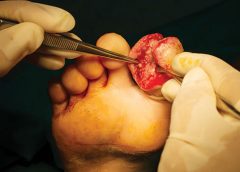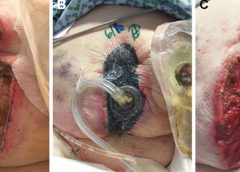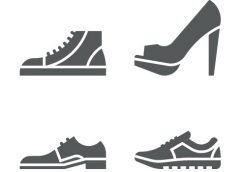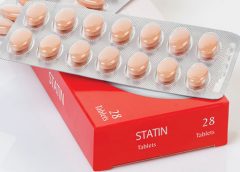On April 13, 2016, the National Pressure Ulcer Advisory Panel (NPUAP) announced changes in pressure ulcer terminology and staging definitions. Providers can adapt NPUAP’s changes for their clinical practice and documentation, but it’s important to note that, as of press time, the Centers for Medicare & Medicaid Services (CMS) has not adopted the changes. This means that providers can’t use NPUAP’s updates when completing CMS assessment forms, such as the Minimum Data Set (MDS) or Outcome and Assessment Information Set (OASIS). Instead, they must code the CMS assessment forms according to current CMS instructions and definitions. In addition, there is no ICD-10 code for pressure injury. (more…)
Read MoreYear: 2016
Preparing the wound bed: Basic strategies, novel methods
The goal of wound-bed preparation is to create a stable, well-vascularized environment that aids healing of chronic wounds. Without proper preparation, even the most expensive wound-care products and devices are unlikely to produce positive outcomes.
To best prepare the wound bed, you need to understand wound healing physiology and wound care basics, as well as how to evaluate the patient’s overall health and manage wounds that don’t respond to treatment. (See Normal wound healing.) (more…)
Read MoreWho can perform sharp wound debridement?
Nurses and therapists often wonder if their license permits them to perform sharp wound debridement. Scope of practice varies significantly from state to state, so it’s imperative to check your state for specific guidance, but we can address some of the challenges clinicians face in deciding whether they can perform this valuable service for patients.
Sharp debridement vs. other forms
Read MoreBalancing the wheels of life
Have you ever ridden a bicycle with a wobbly wheel? The ride isn’t smooth, and you notice every bump in the road. As you focus on your discomfort, you may be distracted from the beautiful vistas you’re riding past.
Think of the bicycle as your overall health, which carries you through life. For most of us, learning how to ride a bike begins in childhood as we learn to control the wheels. But with more wear and tear on the bike, the once-pleasant ride becomes uncomfortable and sometimes out of balance. (more…)
Read MoreInstill instead: Negative pressure wound therapy with instillation for complex wounds
Negative pressure wound therapy (NPWT) uses negative pressure to draw wound edges together, remove edema and infectious material, and promote perfusion and granulation tissue development. The tissue stretch and compression created by negative pressure during NPWT promotes tissue perfusion and granulation tissue development through angiogenesis, cellular proliferation, fibroblast migration, increased production of wound healing proteins, and reduction of wound area. NPWT has been used to improve healing in a variety of wounds, including traumatic injuries, surgical wounds, pressure ulcers, diabetic foot ulcers, and venous stasis ulcers. (more…)
Read MoreAssessing footwear in patients with diabetes
Inappropriate footwear is the most common source of trauma in patients with diabetes. Frequent and proper assessment of appropriate footwear is essential for protecting the diabetic foot from ulceration.
Here is a step-by-step process for evaluating footwear. Be sure to evaluate footwear with the patient walking, standing, and sitting. (more…)
Read MoreDoing it cheaply vs. doing what’s best for patients
Sad but true: Much of what we do as healthcare professionals is based on reimbursement. For nearly all the services and products we use in wound care and ostomy management, Medicare, Medicaid, and insurance companies control reimbursement. For many years, these payers have been deciding which interventions, medications, products, and equipment are the best, and then reimbursing only for those items. If we want to use something not on the list, we—or our patients—will have to pay for it out of pocket. (more…)
Read MoreClinical Notes: biofilm, bariatric surgery, statins and more
Management of biofilm recommendations
The Journal of Wound Care has published “Recommendations for the management of biofilm: a consensus document,” developed through the Italian Nursing Wound Healing Society.
The panel that created the document identified 10 interventions strongly recommended for clinical practice; however, panel members noted that, “there is a paucity of reliable, well-conducted clinical trials which have produced clear evidence related to the effects of biofilm presence.” (more…)
Read MoreTool Kits
Click each title to download the tool kit PDF.
Alginate Dressing
Ankle Brachial Index
Diabetes foot examination
Debridement Tool
Job Task Analysis
Lanarkshire Oximetry Index
Plan-Do-Study-Act (PDSA) – Cycle Planning Sheet
PDSA Cycle Progress Sheet
PDSA Reporting Form
SBAR wound and skin provider communication record
Weekly Skin Assessment
Read MoreNote from Executive Director—May/June 2016
In the first article of this series, I shared how the NAWCO Certification Committee works. Although it was only a brief overview, I hope it gave you an idea of the work this talented group of individuals does. In this article, I will continue to introduce you to the 15 members of the committee. (more…)
Read MoreClinician Resources: OSHA, Education Program, Civil Workplace
This issue we focus on resources to help clinicians protect themselves from injuries and engage in a healthier lifestyle.
OSHA safety website
A hospital is one of the most hazardous places to work, according to the Occupational Safety and Health Administration (OSHA). The agency provides a wealth of information on how to protect hospital workers as part of its website Worker Safety in Hospitals: Caring for Our Caregivers. PDF resources include:
• A fact sheet that helps dispel myths, barriers, and concerns related to safe patient handling
• Information on making the case for safe patient handling programs (more…)
Read More10 tips for a successful professional conference
Attending a professional conference can yield many benefits if you follow these 10 tips.
1 Obtain new knowledge. Conferences provide opportunities for clinicians to gain new knowledge about procedures, technology, and research. Take notes and keep handouts for reference. After you return, share what you have learned with colleagues so multiple people benefit from the conference. Remember to complete the necessary information to obtain professional continuing education (CE) credit.
2 Become certified. Conferences typically provide opportunities for attendees to take certification exams or attend sessions to prepare for exams. If you’re planning to take a certification test, obtain test blue prints at the conference or attend a pre- or post-conference session that focuses on the certification exam. If you’re ready to test, sign up before the conference so you can become certified while you’re away. (more…)
Read More










